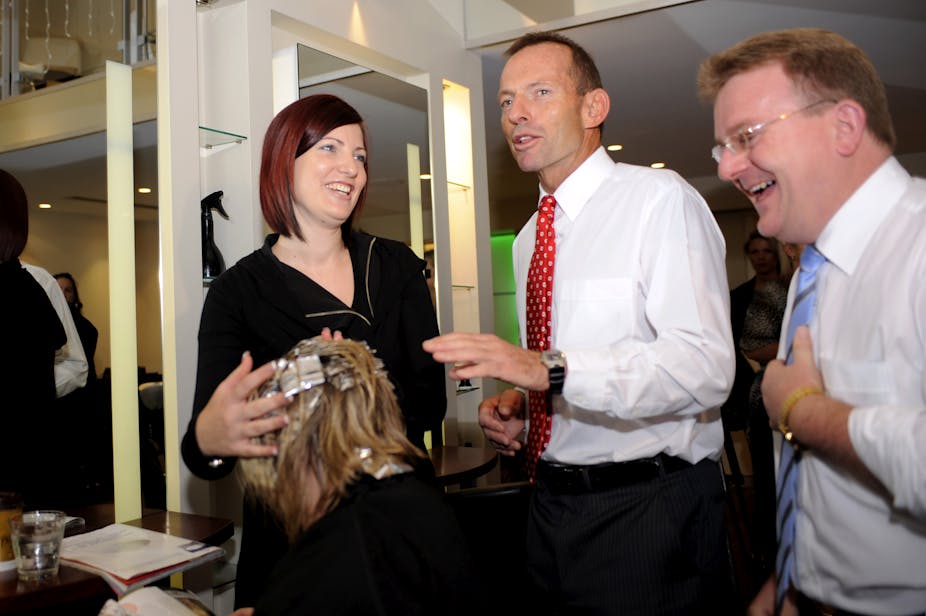Governments in most countries, including Australia, often feel the need to predict which skills will be in demand and match them with increased supply largely through education planning and migration.
It’s a desire that has caused recent controversy, following calls by the Employment Department for changes to the Skilled Occupation List (SOL).
While intuitively it seems a useful thing to do, workforce planning has a chequered history, particularly with respect to formal modelling, of not being particularly successful.
As my colleague Sue Richardson of Flinders University has pointed out, even predictions by the Australian Bureau of Statistics (ABS) of the total labour force, which is the measure of total supply, have been found to be quite inaccurate.
In 1999 the ABS forecast the total size of the Australian labour force up to 2008. ABS estimates were short by 750,000 people. If we can’t accurately forecast the total labour supply, how is it possible to actually project individual occupations within the labour market?
Also, there is not a great deal of matching between qualifications, skills and occupations, apart from certain exceptions such as medicine. In most of the skilled occupations only a minority pursue a lengthy career in their field of qualification. Even graduates from the most vocational courses, such as the trades, do not tend to stay in the associated occupation for the whole of their career.
Choice matters
The labour market is characterised by a great deal of substitution between occupations and mobility of people between jobs, which makes trying to match people with qualifications to jobs in demand impossible even if the projections of demand were right.
In a democratic society people choose what to study or what job to accept. Governments may feel they know best what’s best for people, but I would argue most people have a fair idea of which courses suit them and of their career aspirations. Take for example the push to make more people do science courses. Students are quite aware that a career in science for most is poorly paid with poor career prospects while a much less “useful” commerce course offers better rewards, and so they vote with their feet.
Although some tradespeople earn high incomes (in line with the urban myth), the average tradesperson’s income is about the same as the average worker and many have lower incomes. The best returns to education and training are, on average, by gaining a university degree.
Migration needs a long-term focus
Skilled people wishing to migrate permanently to Australia, with recognised qualifications and English language competency, usually have good career prospects in Australia even if they don’t get work in the exact field they want to on arrival. Adding a particular occupation to the Skilled Occupation List (SOL) is not a bad indicator of where there will be a labour surplus by the time you arrive.
Education, training and permanent migration should be about the long run. The Australian economy has undergone significant structural change over the past three decades. Industries have also embraced new technologies and have become increasingly involved in the global economy.
Much of the changing composition of employment can be attributed to changing industry mix away from “industrial” jobs to the service sectors. Changes in industry composition have combined with technological change to systematically change the demand for skills. It has allowed for, or even driven, a restructuring of occupations within industries. Less skilled workers are more vulnerable, as are manual, younger and older workers. More cognitive, generic and interactive (people) skills are required.
We have experienced the debacle under the old Migration Occupation in Demand List (MODL) of a flood of overseas students (particularly from India) seeking to take IT and accounting courses because it allowed easy access to a permanent visa.
The popularity of vocational courses such as hairdressing and cookery increased dramatically with overseas students since enrolling in a vocational course rather than a Commerce or IT degree became the most cost-effective and assured pathway to permanent residency given another change to the MODL.
Recent changes to the skilled migration program include a new points test, along with a more frequently revised and narrower SOL replacing the much wider and general MODL. The changes are designed to ensure that no one factor alone will guarantee success to potential migrants, but rather a combination of skills, qualifications and experience are required to clear the new pass mark of 65.
Now, failure to meet English language requirements and or work requirements greatly diminishes the prospects of residency. The current system with the SOL list, while an improvement, still has the potential to wreak havoc in Australia’s education export industry because student decisions are driven by migration considerations.
Short-run skill shortages are best met by temporary migration such as working holiday-makers and people on 457 visas. Employers are the best people to know where it is difficult to meet labour shortages through local recruitment and hire people from overseas with relatively quick and cheap immigration processing.
Basing permanent migration on short-term shortages, such as for skilled tradespeople during a mining boom, is precisely what the economy doesn’t need.
Perhaps it’s time to drop the SOL and base permanent migration on recognised qualifications (in general rather than specific areas) and English language competence – the best indicators of employability.

